Click on images to enlarge
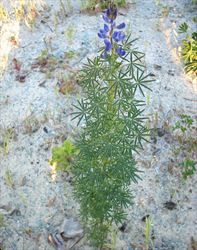
habit (Photo: Sheldon Navie)
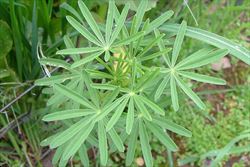
leaves (Photo: Sheldon Navie)
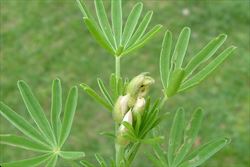
close-up of leaves and rarely occurring white flower buds (Photo: Sheldon Navie)
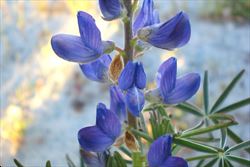
close-up of the blue pea-shaped flowers (Photo: Sheldon Navie)
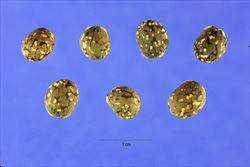
close-up of seeds (Photo: Steve Hurst at USDA PLANTS Database)
Scientific Name
Lupinus angustifolius L.
Synonyms
Lupinus cosentinii Guss. (misapplied)Lupinus hirsutus L. (misapplied)
Family
Fabaceae (Queensland, the ACT, Victoria, Tasmania, and the Northern Territory)Fabaceae: sub-family Faboideae (New South Wales)Leguminosae (South Australia)Papilionaceae (Western Australia)
Common Names
Australian lupin, Australian sweet lupin, bitter lupin, blue lupin, blue lupine, European blue lupine, lupin, narrow leaf lupin, narrow leafed lupin, narrow leaved lupin, narrow-leaf lupin, narrowleaf lupin, narrowleaf lupine, narrow-leafed lupin, narrow-leaved blue lupin, narrow-leaved lupin, New Zealand blue lupin, sweet lupinseed
Origin
Native to northern Africa (i.e. Algeria, Egypt and Morocco), southern Europe (i.e. Bulgaria, Greece, Italy, France, Portugal and Spain) and western Asia.
Naturalised Distribution
Widely naturalised in southern and eastern Australia (i.e. in eastern New South Wales, in some parts of Victoria, in Tasmania and in south-western Western Australia). Also present in some parts of western New South Wales and sparingly naturalised in south-eastern Queensland.
Notes
Narrow-leaved blue lupin (Lupinus angustifolius) is regarded as an environmental weed in Western Australia. This species is grown as a fodder and grain plant and is mainly a weed of agricultural areas and habitation (e.g. disturbed sites, waste areas, roadsides, parks and croplands). However, it has also become naturalised in disturbed natural vegetation, sandy coastal habitats and open woodlands.
Narrow-leaved blue lupin (Lupinus angustifolius) is a weed of road verges and woodlands from Geraldton to Albany and is listed as a minor environmental weed in the Environmental Weed Strategy of Western Australia. It is also widely naturalised in New South Wales, where it is often found growing in open eucalypt woodlands.

